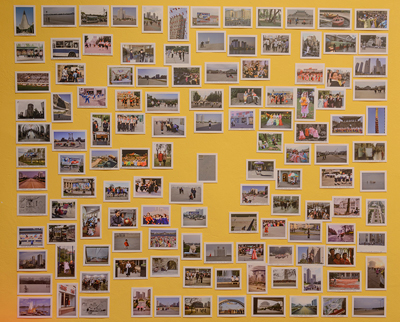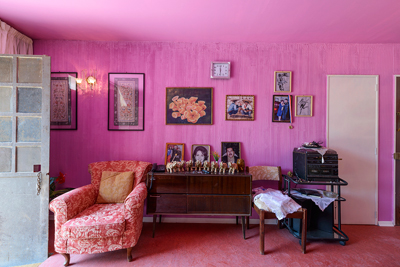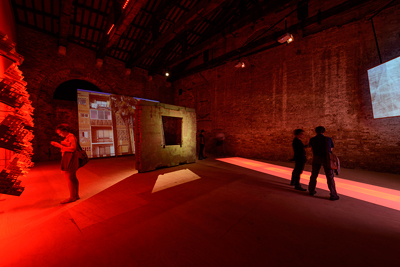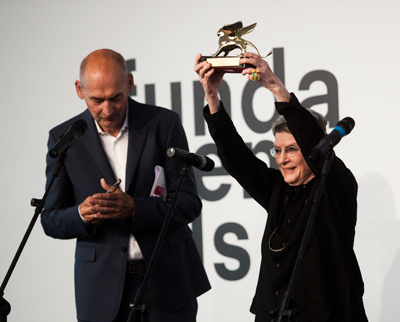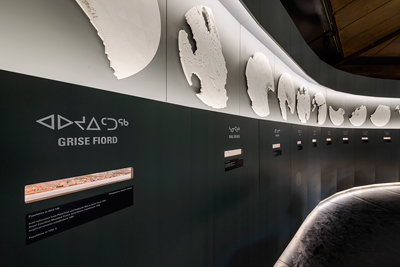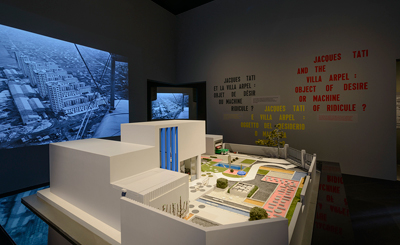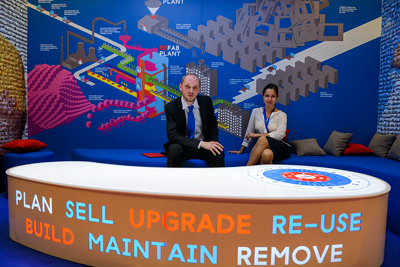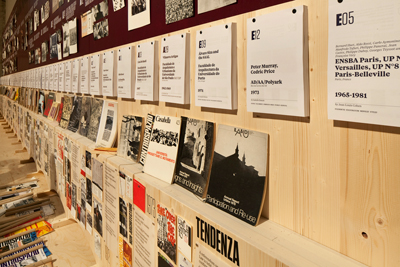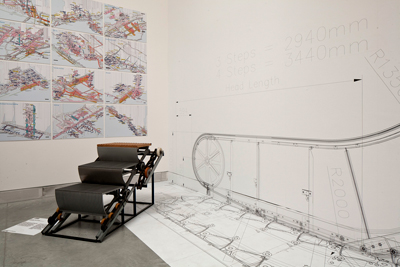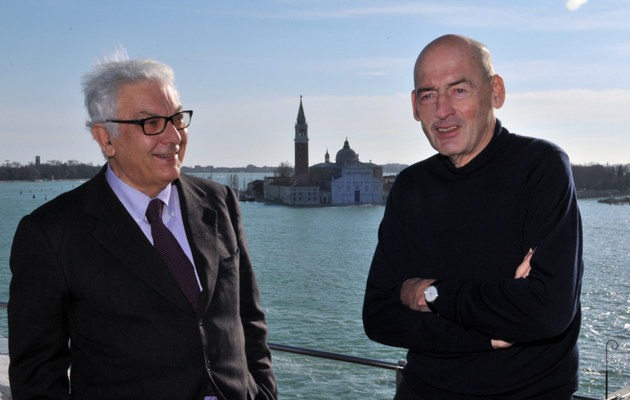|
Crow’s Eye View: The Korean Peninsula by South Korea (image: Andrea Avezzù) |
||
|
Crow’s Eye View at the Venice Biennale depicts how modern architecture developed in both South and North Korea, highlighting the different paths the two countries have taken South Korea nabbed the coveted Golden Lion for best national participant in the 14th Venice Architecture Biennale during an awards ceremony on Saturday, at which Canadian Centre for Architecture-founder Phyllis Lambert received the award for Lifetime Achievement. South Korea’s pavilion, Crow’s Eye View: The Korean Peninsula, depicts how modern architecture developed in both South and North Korea, highlighting through photographs, artwork, videos and posters the different paths the two countries have taken.
Crow’s Eye View: The Korean Peninsula (image: Andrea Avezzù) Curated by Minsuk Cho of architecture practice Mass Studies, the exhibition provides an insight into his nation’s secretive communist neighbour state through projects such as “Comrades of Construction” by Beijing-based artist and North Korea tour guide Nick Bonner – a series of construction site scenes imbued with socialist, nationalist and Confucian elements; and “Borders”, a section devoted to the demilitarised zone between the two countries. Cho initially planned to work with North Korean architects to put together the pavilion but was unable to elicit a response from the country’s authorities. He worked with more than 30 others architects, designers and researchers from around the world to put together the exhibitions, which is a response to the broader Biennale theme, Absorbing Modernity: 1914-2014, that director Rem Koolhaas set all the national participants. The jury commended the pavilion for its “extraordinary achievement of presenting a new and rich body of knowledge of architecture and urbanism in a highly charged political situation”. “Using diverse modes of representation that encourage interaction, it is research-in-action, which expands the spatial and architectural narrative into a geopolitical reality,” it added.
Monolith Controversies by Chile (image: Andrea Avezzù) The Silver Lion went to Chile for Monolith Controversies, a pavilion that revealed “a critical chapter of the history of global circulation of modernity”. Its curators chose to focus on one modern architectural element – a prefabricated concrete wall – to highlight the role of such elements in different ideological and political contexts.
Monolith Controversies (image: Andrea Avezzù) Meanwhile, the Silver Lion for the best research project at the Monditalia, the Italian pavilion, went to Sales Oddity: Milano 2 and the Politics of Direct-to-home TV Urbanism. Devised by architect Andrés Jaque of the Office for Political Innovation, the project explores the power of the media in social spaces, through a series of interviews and surveys.
Sales Oddity. Milano 2 and the Politics of Direct-to-home TV Urbanism Andrés Jaque/Office for Political Innovation (image: Francesco Galli) The Biennale board, chaired by Paolo Baratta, awarded the Golden Lion for Lifetime Achievement to Phyllis Lambert, as recommended by Koolhaas. Lambert founded the influential Canadian Centre for Architecture and played a major role in the development of the Seagram Building in New York.
Phyllis Lambert wins the Golden Lion for Lifetime Achievement (image: Italo Rondinella) “Not as an architect, but as a client and custodian, Phyllis Lambert has made a huge contribution to architecture,” said Koolhaas, explaining the decision. “Without her participation, one of the few realisations in the 20th century of perfection on earth – the Seagram Building in New York – would not have happened. “Her creation of the Canadian Centre for Architecture in Montreal combines rare vision with rare generosity to preserve crucial episodes of architecture’s heritage and to study them under ideal conditions. Architects make architecture; Phyllis Lambert made architects.”
Arctic Adaptations: Nunavut at 15 by Canada (image: Andrea Avezzù) The awards jury comprised Italy’s Francesco Bandarin, assistant director-general for culture at Unesco; Nigerian architect Kunlé Adeyemi, Dutch documentary maker Bregtje van der Haak, Chinese art curator and critic Hou Hanru and Mitra Khoubrou, founder of UAE-based events consultancy Pink Tank.
France’s Modernity: Promise or Menace? (image: Andrea Avezzù) They gave special mention to three other national pavilions: Canada’s Arctic Adaptations: Nunavut at 15, which depicts life in the far north; France’s Modernity: Promise or Menace, which asks questions about the legacy of modernism; and Russia’s Fair Enough, a display of various moments in the country’s architectural history in the form of a fictitious trade fair.
Fair Enough: Russia’s Past, Our Present (image: Andrea Avezzù) They also commended three research projects in the Arsenale: Radical Pedagogies: Action-Reaction-Interactions, which illustrates the impact of Italian architectural thinking around the world; Intermundia, an immersive experience that highlights the reality of South to North migration following the recent tragedy at Lampedusa; and Italian Limes, which demonstrates how climate change and new technologies challenge the concept of intra-European borders.
Radical Pedagogies: Action-Reaction-Interaction (image: Francesco Galli) Koolhaas set the overall theme of this year’s event, Fundamentals, to encourage participants to reconnect with architecture’s history in an effort to trace how it came to be in its current state and speculate on its future. The national participants were asked to look at how their countries gave generic and globalised modernity specific form. By setting the countries a theme – a first for the Biennale – Koolhaas hoped to bring structure and unity to the show at the Giardini.
Elements of Architecture: escalator (image: Francesco Galli) Koolhaas’ own exhibition, Elements of Architecture, was the result of two years of research with the Harvard Graduate School of Design and various other collaborators, into the fundamentals of buildings – from doors, floors, walls and ceiling to escalators, fireplaces and toilets. It presents a detailed history of each of these elements. The other main exhibition, Monditalia in the Arsenale, focused on various aspects of Italian culture and architecture, through a mix of media and research projects. Win a copy of Golden Lion winner Phyllis Lambert’s book, Building Seagram, here |
Words Debika Ray |
|
|
||
|
The Venice Biennale’s president Paolo Baratta and curator Rem Koolhaas (image: Giorgio Zucchiatti) |
||


